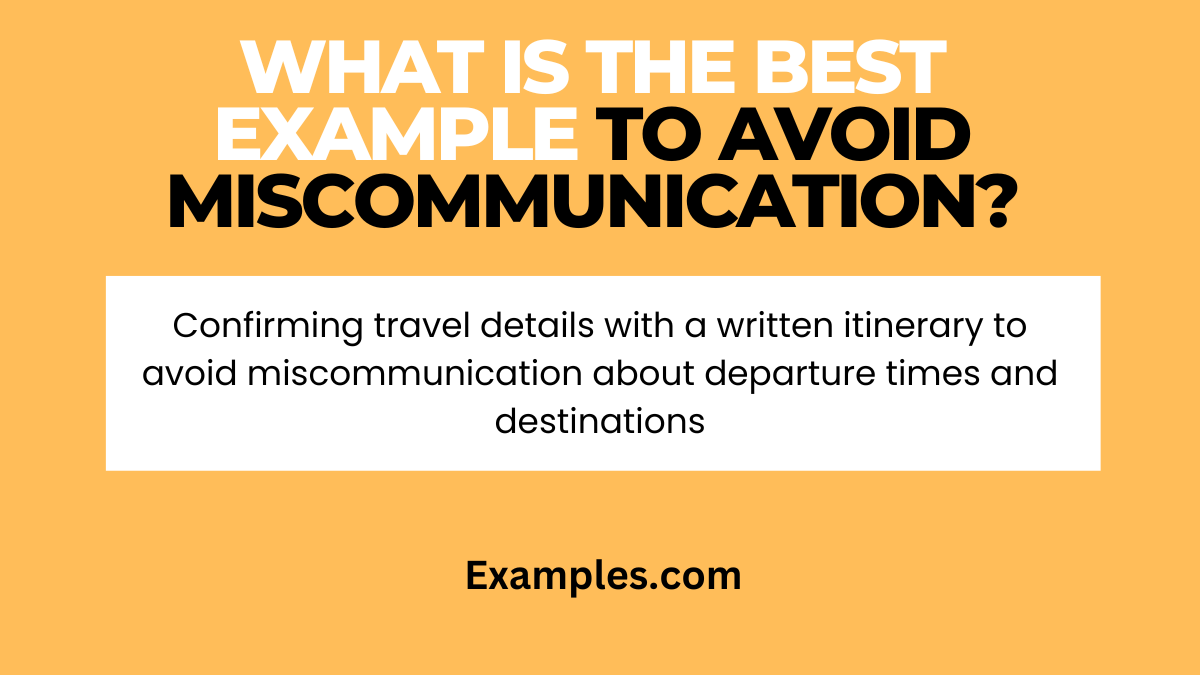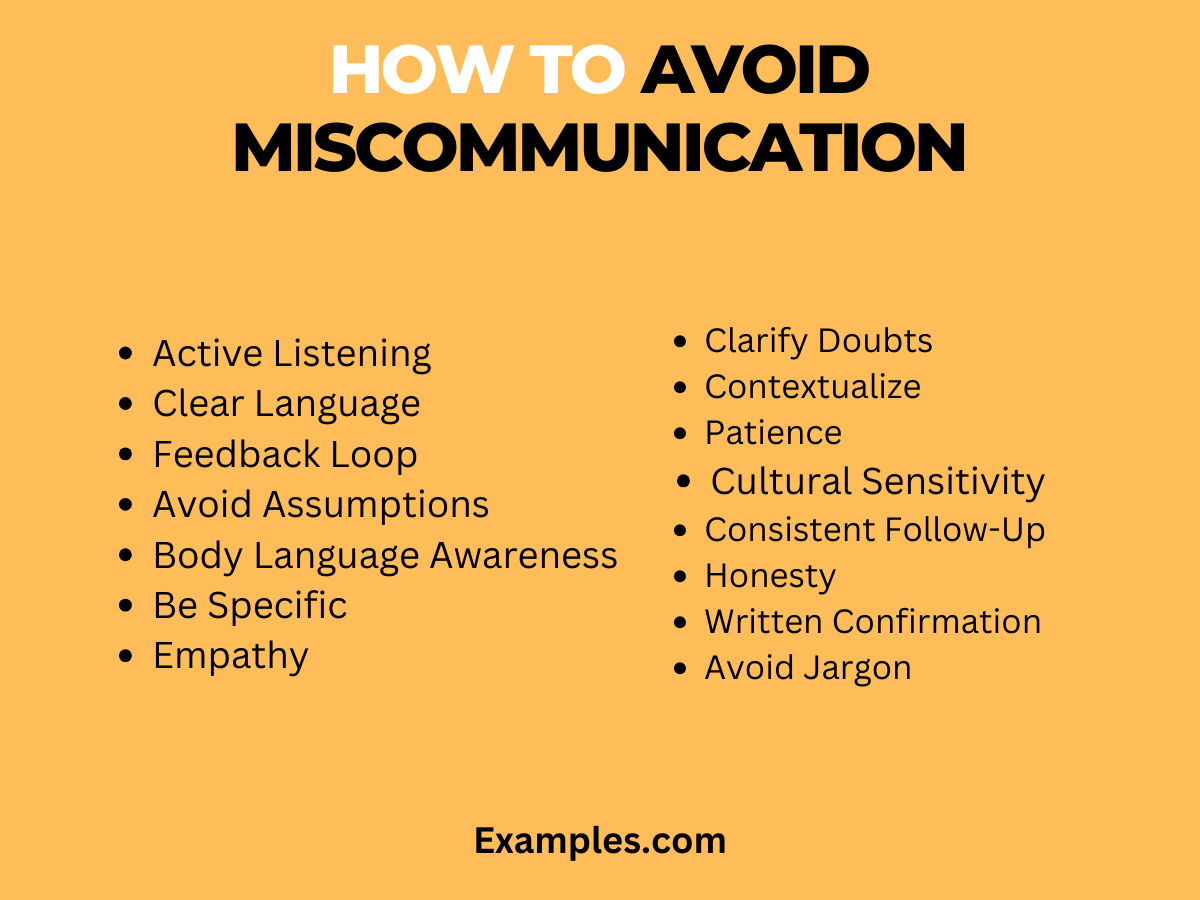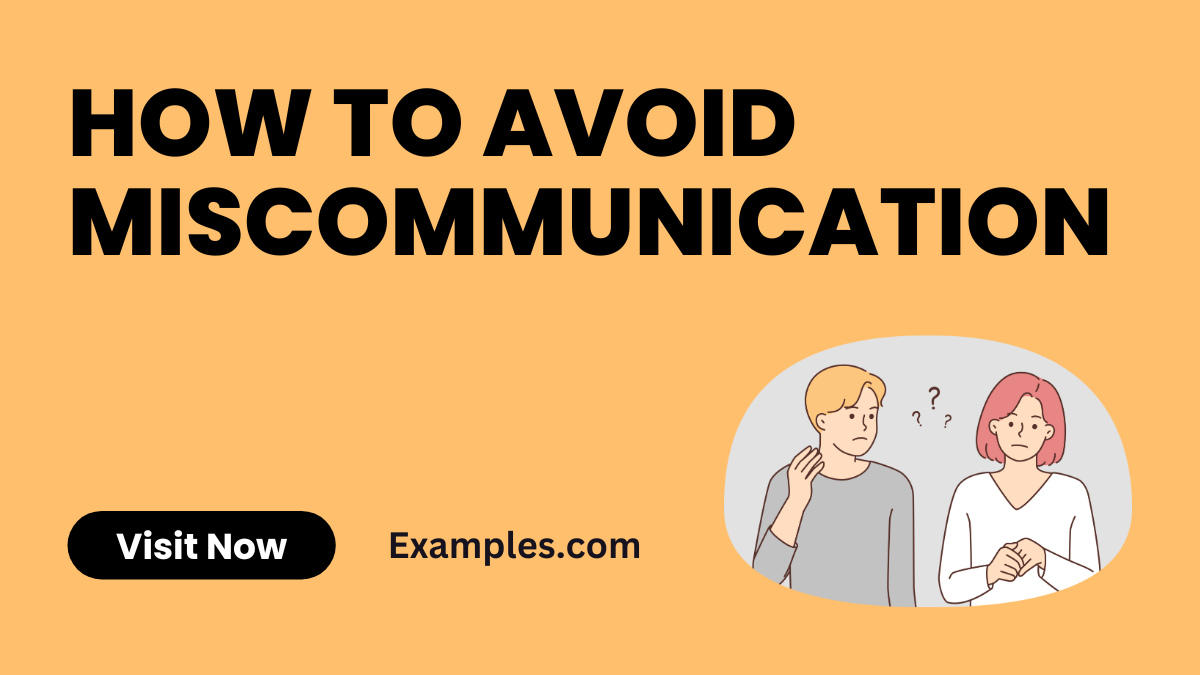How to Avoid Miscommunication – 14+ Examples, How to Stop
In a world brimming with miscommunication examples, knowing how to convey your message effectively is crucial. This guide offers practical tips and strategies, coupled with real-life examples, to help you navigate the intricacies of communication. Learn to express yourself clearly, listen actively, and understand others accurately, thereby reducing the chances of miscommunication in your personal and professional life.
What is the Best Example to Avoid Miscommunication?

The best example to avoid miscommunication is clear and concise communication in a professional setting. For instance, in project management, using precise language, confirming understanding, and documenting discussions can significantly reduce miscommunication risks.
15 How to Avoid Miscommunication

- Active Listening: Focus intently on the speaker without interruption. Active listening involves fully concentrating, understanding, and responding thoughtfully to what is being said. It’s a crucial skill that helps in accurately interpreting messages and reducing misunderstandings. By practicing active listening, you ensure that you comprehend the speaker’s intent and context, leading to more effective and meaningful communication.
Communicate effectively: “I understand you’re saying [message], is that correct?” - Clear Language: Use simple, direct language to convey your message. Using clear and unambiguous language is fundamental in avoiding miscommunication. It involves choosing words that are straightforward and easy for your audience to understand. This approach minimizes the risk of confusion, ensuring that your message is conveyed accurately and effectively.
Communicate effectively: “Please submit the report by 5 PM on Friday.” - Feedback Loop: Always confirm understanding by asking for feedback. Implementing a feedback loop in communication involves seeking confirmation that your message has been understood as intended. This practice helps in verifying that the recipient has accurately interpreted your words, thereby significantly reducing the chances of miscommunication.
Communicate effectively: “Could you summarize what I just explained?” - Avoid Assumptions: Never assume the other person has the same information as you. To avoid miscommunication, it’s crucial to not make assumptions about the other person’s knowledge or understanding. Clearly stating information, even if it seems obvious, ensures that everyone is on the same page and helps prevent misunderstandings.
Communicate effectively: “I’m sharing this because you might not have the details.” - Body Language Awareness: Ensure your body language matches your words. Being aware of your body language and ensuring it aligns with your verbal communication is key in conveying your message effectively. Non-verbal cues like facial expressions and gestures play a significant role in how your message is received and interpreted.
Communicate effectively: “I’m happy to help,” with a genuine smile. - Be Specific: Avoid vague statements and be precise in your communication. Specificity in communication ensures that your message is clear and unambiguous. By being detailed and precise, you can avoid misunderstandings and ensure that your intentions and expectations are understood exactly as you intended.
Communicate effectively: “The meeting is scheduled for 10 AM in the main conference room.” - Empathy: Understand the emotional context of the conversation. Empathy in communication involves understanding and acknowledging the emotions and perspective of the other person. It helps in building a stronger connection and ensures that your message is conveyed in a considerate and effective manner.
Communicate effectively: “I see this situation has been challenging for you.” - Avoid Jargon: Use language that is easily understandable by everyone involved. Avoiding jargon and technical language in communication makes your message more accessible to a broader audience. Using simple, everyday language ensures that your message is clear and easily understood by everyone, regardless of their background.
Communicate effectively: “Let’s use simpler terms to explain the process.” - Clarify Doubts: If unsure, always ask for clarification. Actively encouraging clarification of doubts helps in ensuring that everyone has a clear understanding of the message. This practice invites questions and further discussion, leading to more accurate and effective communication.
Communicate effectively: “Could you explain a bit more about what you mean?” - Contextualize: Provide background information when necessary. Providing context in your communication helps in giving the recipient a better understanding of the situation or message. Contextualizing your message makes it more relatable and easier to comprehend, thereby reducing the likelihood of miscommunication.
Communicate effectively: “Considering our last discussion, I think we should…” - Patience: Take time to formulate and understand messages. Practicing patience in communication allows for thoughtful expression and understanding. Taking the time to listen, process, and respond thoughtfully helps in preventing rushed and potentially unclear messages, leading to more effective communication.
Communicate effectively: “Let me take a moment to think about this.” - Cultural Sensitivity: Be aware of cultural differences in communication styles. Being culturally sensitive in your communication involves acknowledging and respecting cultural differences in communication styles and preferences. This approach fosters mutual respect and understanding, which is essential in diverse settings.
Communicate effectively: “I respect our cultural differences and want to understand your perspective.” - Consistent Follow-Up: Reiterate important points in follow-up communications. Consistent follow-up in communication helps in reinforcing important points and ensuring ongoing understanding. Regularly revisiting key messages ensures that they are understood and remembered, minimizing the chances of miscommunication.
Communicate effectively: “As we discussed earlier, the deadline is next Monday.” - Honesty: Be truthful and transparent in your communication. Honesty in communication involves being transparent and truthful in your messages. Honest communication builds trust and credibility, ensuring that your messages are taken seriously and reducing the risk of misunderstandings.
Communicate effectively: “I need to be honest about the challenges we’re facing.” - Written Confirmation: Send a written summary of verbal agreements. Providing a written confirmation of verbal agreements or discussions helps in ensuring that all parties have a clear and consistent understanding of what was communicated. This practice is crucial in formal settings where accuracy and accountability are paramount.
Communicate effectively: “I’m sending an email to confirm the details we discussed.”
How to Avoid Miscommunication in the Workplace
1. Clear and Concise Communication: Practice straightforward and unambiguous language. Avoid jargon and overly complex terms.
2. Active Listening: Encourage listening attentively and asking questions for clarification.
3. Regular Feedback: Implement a system for providing and receiving feedback to ensure mutual understanding.
4. Written Follow-ups: After meetings, send summaries or action items to confirm understanding.
5. Cultural Sensitivity: Be aware of and respect cultural differences that can affect communication.
Strategies to Avoid Miscommunication with Your Team
1. Set Clear Expectations: Define roles, responsibilities, and goals clearly.
2. Consistent Communication Channels: Utilize regular meetings and agreed-upon communication platforms.
3. Encourage Open Dialogue: Create an environment where team members feel comfortable sharing ideas and concerns.
4. Use Visual Aids: Incorporate charts, diagrams, or lists to complement verbal or written instructions.
5. Training and Development: Offer communication skills training for your team.
6. Feedback Loop: Establish a process for continuous feedback and adjustment.
7. Empathy and Understanding: Foster an empathetic approach to communication, considering different viewpoints.
8. Avoid Assumptions: Clarify and verify information instead of making assumptions.
How to Stop Miscommunication in a Relationship
1. Active and Empathetic Listening: Listen to understand, not just to respond.
2. Open and Honest Dialogue: Be transparent about thoughts and feelings.
3. Avoid Jumping to Conclusions: Take time to understand the context and perspective of your partner.
4. Regular Check-ins: Have routine discussions about the relationship and communication.
5. Seek Clarification: When in doubt, ask for more information to avoid misunderstandings.
Effective communication is the cornerstone of successful interpersonal interactions. By embracing clarity, empathy, and active listening, we can significantly reduce the incidence of miscommunication. This guide provides essential strategies and examples to enhance your communication skills, fostering better understanding and collaboration in all aspects of life.



